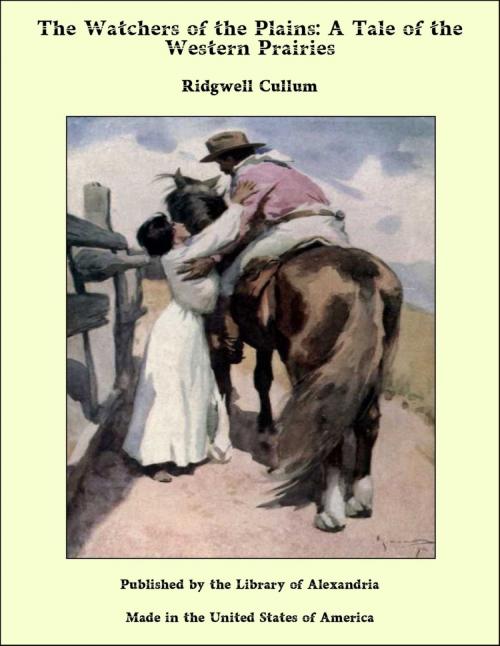The Watchers of the Plains: A Tale of the Western Prairies
Nonfiction, Religion & Spirituality, New Age, History, Fiction & Literature| Author: | Ridgwell Cullum | ISBN: | 9781465626400 |
| Publisher: | Library of Alexandria | Publication: | March 8, 2015 |
| Imprint: | Language: | English |
| Author: | Ridgwell Cullum |
| ISBN: | 9781465626400 |
| Publisher: | Library of Alexandria |
| Publication: | March 8, 2015 |
| Imprint: | |
| Language: | English |
A solitary hut, dismal, rectangular, stands on the north bank of the White River. Decay has long been at work upon it, yet it is still weather-proof. It was built long before planks were used in the Bad Lands of Dakota. It was built by hands that aimed only at strength and durability, caring nothing for appearances. Thus it has survived where a lighter construction must long since have been demolished. And it still affords habitation for man. The windows have no glass; the door is a crazy affair; there is an unevenness in the setting of the lateral logs which compose its walls; the reed thatching has been patched where the weather has rotted it; and here and there small spreads of tarpaulin lend their aid in keeping out the snows of winter and the storms of summer. It occupies its place, a queer, squat sentry, standing midway between the cattle ford and the newer log wagon-bridge lower down the river toward its mouth, where it joins the giant Missouri some two hundred miles distant. It backs into the brush fringing the wood-lined river bank, and is dangerously sheltered from the two great Indian Reservations on the other side of the river. Dangerously, because it is at all times dangerous to live adjacent to woods when so near such a restless race as the Indians on the Rosebud and the Pine Ridge Reservations. Still, it has stood there so long, and yet bears no sign of hostile action directed against it by the warlike Sioux, that it seems safe to reckon it will continue to stand there in peace until decay finishes it off. And the fact is significant.
A solitary hut, dismal, rectangular, stands on the north bank of the White River. Decay has long been at work upon it, yet it is still weather-proof. It was built long before planks were used in the Bad Lands of Dakota. It was built by hands that aimed only at strength and durability, caring nothing for appearances. Thus it has survived where a lighter construction must long since have been demolished. And it still affords habitation for man. The windows have no glass; the door is a crazy affair; there is an unevenness in the setting of the lateral logs which compose its walls; the reed thatching has been patched where the weather has rotted it; and here and there small spreads of tarpaulin lend their aid in keeping out the snows of winter and the storms of summer. It occupies its place, a queer, squat sentry, standing midway between the cattle ford and the newer log wagon-bridge lower down the river toward its mouth, where it joins the giant Missouri some two hundred miles distant. It backs into the brush fringing the wood-lined river bank, and is dangerously sheltered from the two great Indian Reservations on the other side of the river. Dangerously, because it is at all times dangerous to live adjacent to woods when so near such a restless race as the Indians on the Rosebud and the Pine Ridge Reservations. Still, it has stood there so long, and yet bears no sign of hostile action directed against it by the warlike Sioux, that it seems safe to reckon it will continue to stand there in peace until decay finishes it off. And the fact is significant.















